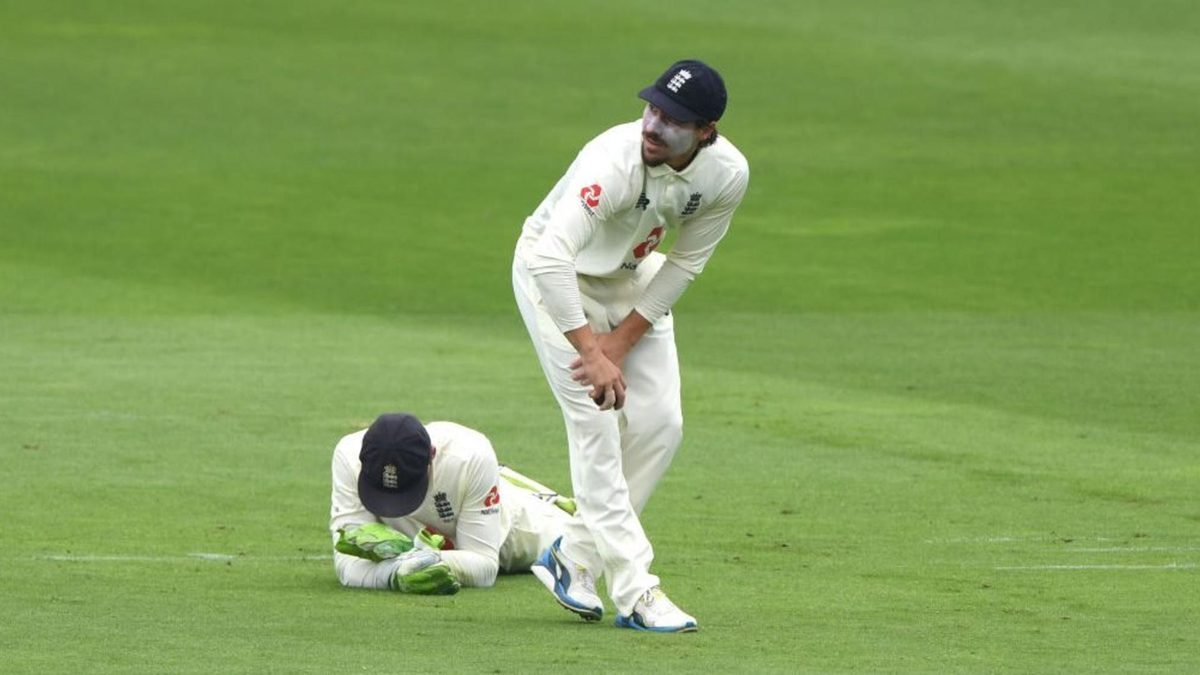
England shelled two catches in the slips on the first morning at the Ageas Bowl. Yas Rana argues that they will not get away with similar mistakes in India or Australia.
When the rain came down to bring a premature end to the first session of England’s second Test against Pakistan, the visitors were 62-1. In the series opener, England’s attack were accused of the occasional loose spell that saw Pakistan’s batsmen score quick, risk-free runs; most notably in passages of play that followed the lunch breaks on days one and two. In a close game, those indisciplined mini-sessions could have cost them.
You couldn’t make that same accusation today. James Anderson bowled as well as he has all summer, Stuart Broad persisted with that probing full length that has served him so well in recent times and Chris Woakes could conceivably have taken three wickets with his first 10 balls. On another day, England could easily have taken more than that solitary wicket in the opening session. It should have been today.
Abid Ali, who would go on to make 60, was dropped first by Dom Sibley, diving across Rory Burns at second slip, on one and then by Burns on 21. The first opportunity came sharply to Sibley but you could argue that had the slips been standing slightly further apart, Burns would have been presented with a simpler chance. It’s harder to excuse Burns’ own drop later in the morning.
Since Chris Silverwood took over from Trevor Bayliss at the end of the 2019 summer, it’s been clear what this England Test team have building up towards – regaining the urn Down Under in 2021/22. England have looked to bat more patiently than they ever did under Bayliss and have arguably had one eye on that tour in their selections this summer, most notably the selection of both Mark Wood and Jofra Archer, their two express quicks, for the first Test of the summer against West Indies.
It’s clear that they have an idea of what that blueprint for success looks like. Bat long, bat once and go to Australia with a variety of bowling options in their attempt to take 20 wickets – a template adhered to superbly by the England Lions in their victory Down Under earlier this year, albeit with an attack consisting of three right-arm fast-medium seamers.
Even if England do post 400-plus first innings scores more often and expand their variety of wicket-taking options, that still might not be enough. The two drops this morning weren’t a blip, it was a continuation of a fairly long-standing problem. As CricViz pointed out, since the start of 2018 only Bangladesh drop a higher percentage of chances in the slip cordon.
Since the start of 2018, England only catch 73% of the slip catching chances that come their way. The only team in the world with a worse record is Bangladesh. #ENGvPAK pic.twitter.com/nfHZv73Irw
— The CricViz Analyst (@cricvizanalyst) August 13, 2020
It’s worth laying out just how hard it is to win in Australia and India. Since the start of 2013, Australia have lost just four out of 38 home Tests. India have lost once from 34. In those home Tests, Australia have averaged 46.24 runs per wicket, India 45.69. It’s hard enough as it is to take 20 wickets in those two countries, let alone if you let chances slip through your grasp. It will be it difficult enough creating 20 chances per Test there; England will not want to have to create 25 per Test to win games.
As England proved later in the day, they will often get away with their lack of ruthlessness in the field, particularly at home. England have won six out of their seven Tests this year and their last six under Joe Root’s captaincy. But their opposition and the conditions in which those Tests have been played in have to be considered, too. After all, their opponents this year – South Africa, West Indies and Pakistan – are currently placed sixth, eighth and seventh in the ICC Test rankings respectively. For all the encouraging steps taken forward in the Silverwood-era, it’s important to keep in mind quite how much the step up will be on their two big upcoming winter tours.
Abid Ali, playing in just his second Test in the UK against the Dukes ball under the lights at the Ageas Bowl provided England further opportunities not long after England squandered their first two, but it’s unlikely Cheteshwar Pujara or Steve Smith will be quite so generous in Nagpur (or Abu Dhabi) or Brisbane. England will need to be playing as close to their absolute peak as possible to win in India or Australia and taking their catches in the field will play a crucial, if understated, part of them achieving that.








